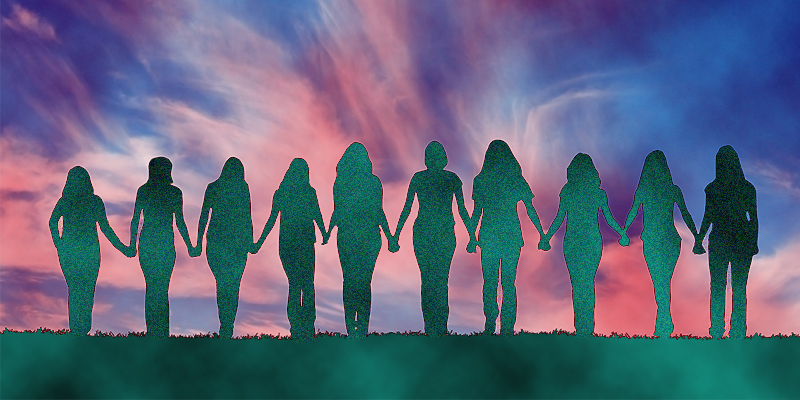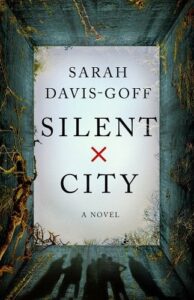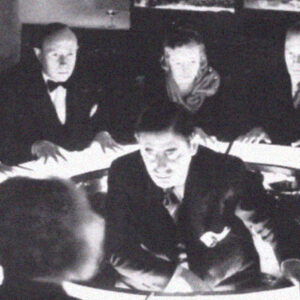So often we hear news of some criminally misogynist finally having a #MeToo moment. For most women, these stories are not particularly surprising, given our lived experiences, given what we observe in work and politics and even our homes every day. What is always amazing to me however is the team of women working together (and men too!) working together over a long period of time, coming forward about experiences in a system designed to quash them.
In fact, all I see is women standing up with each other to tell their stories, knowing as they do so that they’ll be reviled, mocked, ganged up upon, threatened, impoverished. They do it anyway, for the women around them and for women they’ll never meet. Coming forward isn’t just about #MeToo experiences, but also in Ireland recently it’s been about being gay (Ireland was the first country in the world to legalise gay marriage by popular vote), or being upfront about experiences of abortion (which became legal in Ireland for the first time in 2018).
I find these acts really beautiful, and they were the main inspiration for my new novel, Silent City, about a small band of warrior women in a post-apocalyptic Dublin trying to create a new world.
But where are the books about women working together? It seems to be something of a niche. Here are my top five, but I’d LOVE to know about yours because stories of women working together are my absolute favorite.
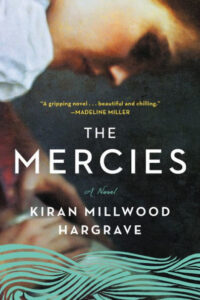
The Mercies by Kiran Milwood Hargrave
1617, Vardo, Norway; the men of the town are fishing when a sudden, violent storm sinks all of their vessels. None return and the women of Vardo are left alone. For years they look after themselves and their children, fishing, working, and grieving. Enter Absolem Cornet, a hand of the Church, with his wife Ursa. She sees a community of capable women. Absolem sees something so utterly unacceptable that surely the devil must be involved. 20 of the women perish in the witch trials that come in this fictional retelling of a true story.
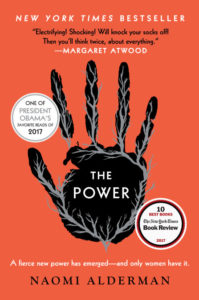
The Power by Naomi Alderman
Everything changes when most women suddenly access a new power – electricity they can emit from the palms of their hands. The women use this to protect themselves, and each other. The old world is upended and a new one created, but this is more than a revenge fantasy; Alderman asks, if women suddenly had the upward hand physically, would the ensuing world be radically different, or nothing more than a mirror image of the one we have now?
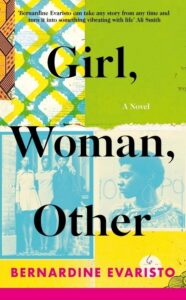
Girl, Woman, Other by Bernadine Everisto
This Booker-winning novel, Everisto’s eighth, is a celebration of intersectional feminism; though many 12 of the women are related to each other, I include because the women work in tandem in such interesting ways – creating a theatre company or cleaning business, creating families. There’s something so rare and enriching about seeing that on a page. There’s unconditional love here despite the societal forces often working to keep the women apart.

The Red Word by Sarah Henstra
A young woman wakes up on dewy grass, hungover and feeling battered on a college campus. The lawn she’s lying on happens to be the backyard of a house of radical feminists, Raghurst; they give her tea, ask her if she needs ‘help’, but it’s not what they think, Karen thank goodness has not been assaulted. In fact she becomes the girlfriend of one of the boys at a neighbouring frat-house, thinking that in this way she can access both worlds. But when the women of Raghurst come up with a plan to highlight and disrupt fratty behaviour, it’s not just Karen who gets caught in the crossfire. I love this novel (and published it in Ireland and the UK at the company I co-own, Tramp Press), it reads like a thriller but is wonderfully smart and complicated.

Women Talking by Miriam Toews
A group of Mennonite women living in rural Bolivia realize that some of them have been having the same bad dream and then waking up stiff, sore, sometimes bleeding. They then realize they haven’t been dreaming at all; in fact they and some of the children are being attacked at night, drugged and raped by some of the men living in their community. When it becomes clear that the perpetrator’s lives are in danger, only then do the other men act to ensure their safety by allowing the rapists to be arrested and brought away.
The women have a limited time to decide what to do before the men are brought home on bail; should they stay and fight, or try to leave? What do they owe the community, their faith, their children and their souls?
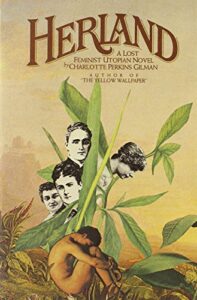
Herland by Charlotte Perkins Gilmore
I felt it was common ‘knowledge’ growing up that there were so few utopias described in literature because they were so difficult to imagine – there are a million types of hell, Dante, Virgil and Milton can tell us, but perfect worlds are boring as well as hard to visualise. In 1915 Charlotte Perkins Gilmore (of ‘The Yellow Wallpaper’ fame) thought different.
Three men journey to an unchartered part of the world rumoured to be ruled by women; what they find there is a world free of war, hunger and hardship. The reader will not be surprised to learn that it is not boring.
***

